Top 10 Surgical Instruments Every Operating Room Should Have
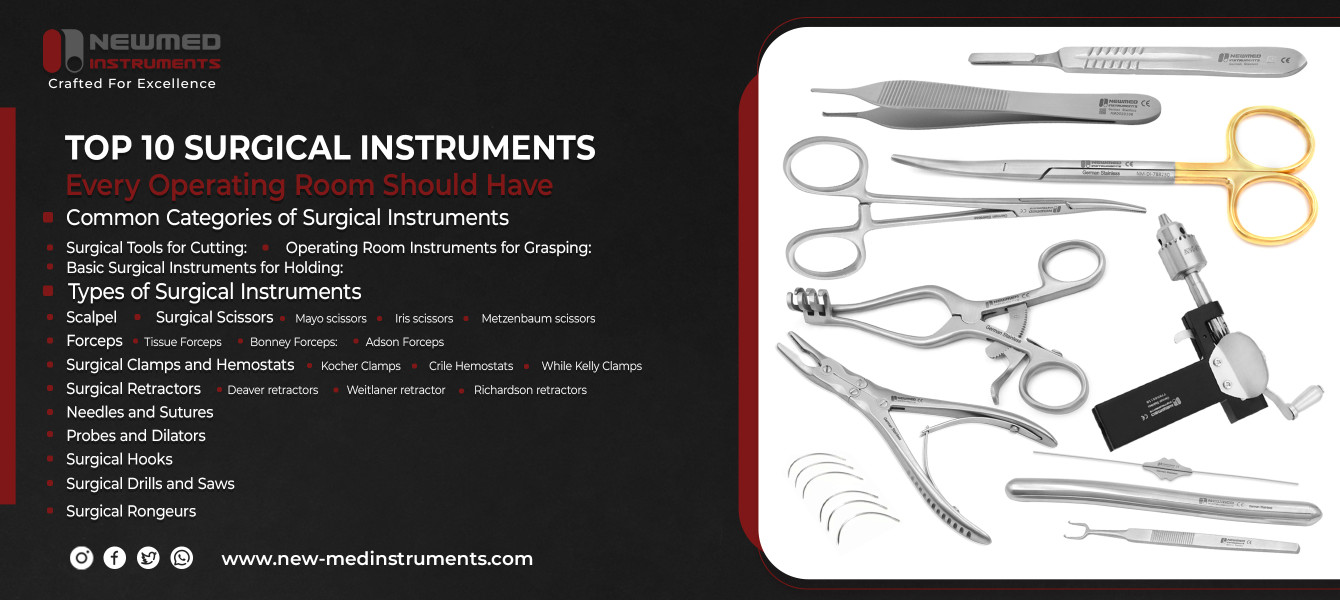
Surgical instruments are every surgical field’s necessary weapons. Surgeons, whether they are seasoned or novices, require high-grade operating room instruments that they can rely on. Therefore, NewMed Instruments has an extensive array of top-notch surgical instruments and sets for both simple diagnostic and complex surgeries.
In this article, we will walk you through the top 10 surgical instruments every operating room should have for unparalleled efficiency. Stay tuned!
Common Categories of Surgical Instruments
Surgeons demand a ready supply of common surgical instruments at all times. Our skilled craftsmen at New Med believe in supplying basic surgical instruments made of tried and tested material. Each surgical tool performs a specific function, ensuring streamlined operations and surgeries.
Here are some of the common categories of surgical instruments, namely:
Surgical Tools for Cutting: Every operating room should have cutting tools for incising and notching. For example, blades, saws, surgical razors, and scissors, among others.
Operating Room Instruments for Grasping: Surgeries require operating tools for grasping organs, tissues, and different surgical materials. Typically, surgeons use clamps and tissue forceps for these functions.
Basic Surgical Instruments for Holding: This category encompasses different tools. Mostly, these surgical tools are hooks, retractors, and needle holders, among others.
Now that you are familiar with the broader categories, gaining knowledge of the essential surgical equipment every surgeon should have is important.
Types of Surgical Instruments
Every surgical field has some essential operating room instruments. For example, scalpels, scissors, retractors, etc. Working without these instruments is almost impossible. Typically, before starting the surgery, technicians prepare the field by equipping the surgical kit with all the required surgical tools.
Given is a quick round-up of types of surgical instruments every operating room should have:
Scalpel
Surgical scalpels are tools for incision. They facilitate the field by making notches and incising different tissues and organs. Usually, scalpels come with blades of different sizes and configurations. They can either be disposable or reusable. They have an ergonomic handle for easy grip and to lower the chances of getting surgical strain.
Typically, every surgical field has blades of sizes 10, 11, and 15 available. These blades are used for incising large tissues, making angled notches, and drawing fine cuts, respectively. 
Surgical Scissors
Every operating room has a ready supply of efficient and reliable surgical scissors. These tools are the most sought-after in the working field. Surgeons and healthcare practitioners use them to cut the tissues and organs.
Additionally, there are specialised scissors for cutting bandages and other surgical materials. Typically, Mayo, Iris, and Metzenbaum scissors become handy tools for surgeons. A brief description of these major scissors is as follows:
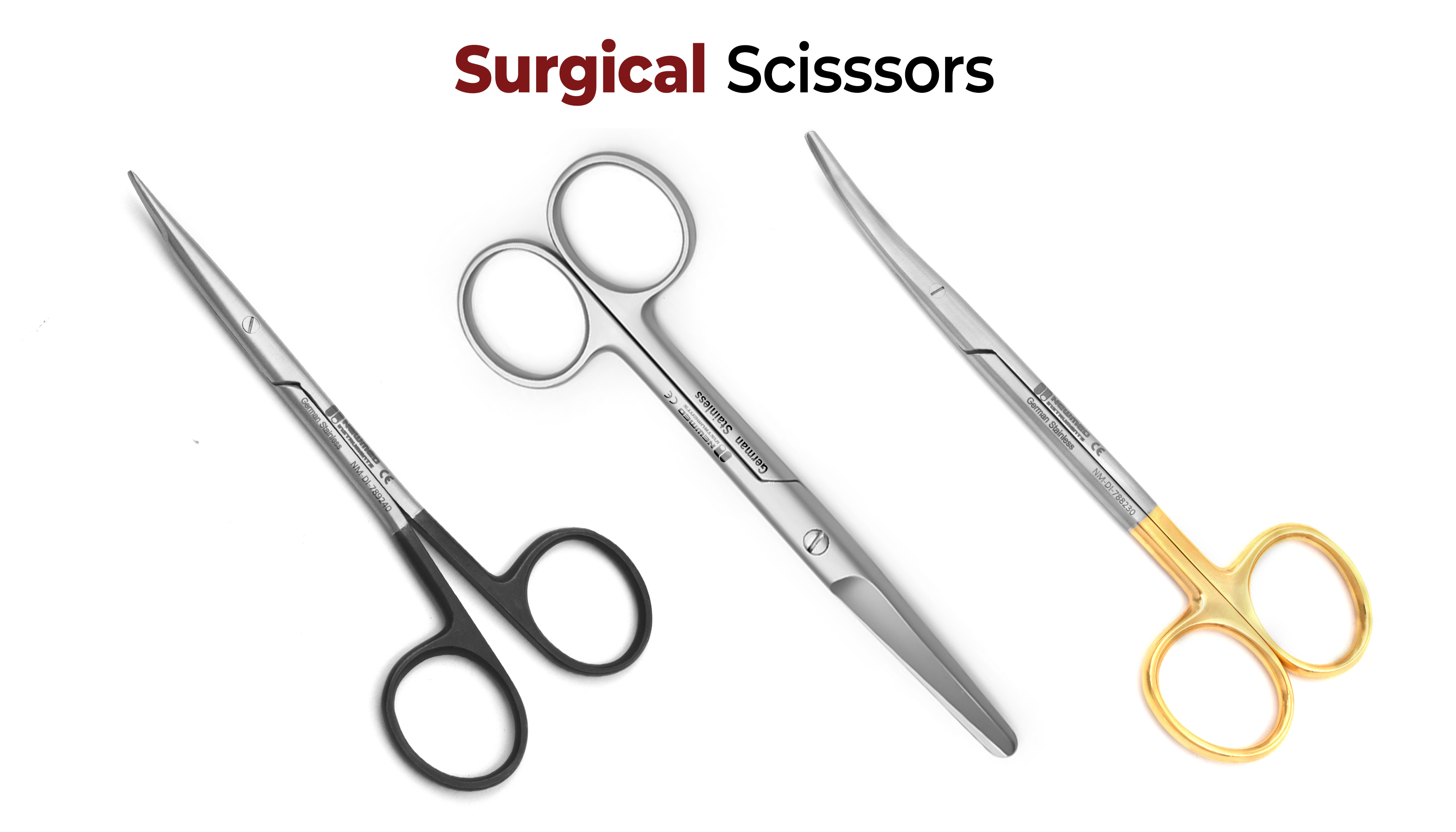 ,
,
Mayo scissors are heavy-duty. Because of this construction, they are used to cut sturdy tissues and organs.Iris scissors are usually used during microsurgeries and ophthalmology. Their construction is precise and compact.
Metzenbaum scissors are primarily used to notch delicate tissues. However, they are useful for cutting sutures too.
Forceps
Usually, surgical forceps have a tweezer-like construction. They are either used to hold tissues or to pick up any foreign object from the surgical site. Typically, they are either serrated or non-serrated. Serrated forceps have a jaw-like gripping edge for a secure grip. While the non-serrated are used to pick up objects.
A general round-up of the surgical forceps is given below, usually:
Tissue Forceps: These forceps are the beloved of the field. They help grab and hold the tissues during surgical manipulation. Manufacturers keep them non-serrated to keep their non-invasive quality intact. --
Bonney Forceps: Surgeons use these forceps to hold sturdy tissues.
Adson Forceps: Manufacturers have designed this forcep for holding thicker tissues and organs.
Surgical Clamps and Hemostats
Healthcare professionals have to have surgical clamps and hemostats at all times. These specialised forceps clamp the blood vessels to stop bleeding. Consequently, this helps minimise any chance of haemorrhage.
Most of these clamps have a unique locking mechanism to provide maximum grip over the vessel. Additionally, their supplementary locking mechanism is an excellent replacement for active hold. Therefore, surgeons can conveniently keep their hands free for other tasks.
There are different types of clamps and hemostats, such as Kocher clamps, Crile hemostats, and Kelly clamps, among others.
Kocher clamps work to clamp the extracted tissue.
Crile hemostats are mostly used during blunt manipulation.
While Kelly clamps usually work on thick vessels.
Surgical Retractors
A constricted surgical view is a major problem. Surgical retractors are specialised tools designed to retract the surgical zone. These tools pull apart the surgical wound to reach the underlying surface and organs, if need be. Typically, they come with a ratchet lock mechanism. Which means that they are either self-retaining or require active holding.
A brief description of major surgical retractors is below:
Deaver retractors are the beloved of many surgical fields. They work to push aside the abdominal wall.
The Weitlaner retractor works best for exposing underlying surfaces.
Richardson retractors are tools of exploration. Because they help access deeper structures of the surgical site.
Needles and Sutures
There are different configurations of needles and needle holders available. For example, conventional cutting needles and tapered surgical needles. The former usually works on harder tissues such as the skin. While the latter is used on softer tissues of the body, for instance, the stomach lining.
Sutures, too, are available in different sizes and styles. For instance, they can either be absorbable or non-absorbable. Surgeons might use skin glue if need be. Similarly, there are surgical staplers for closing the wounds.
Probes and Dilators
Surgical manufacturers believe in supplying the surgical world with supplementary tools, in addition to surgical instruments. Surgical probes are one such tool. They help surgeons find the body cavity or a problematic surgical site.
They may also assist in gauging the site. Usually, the tool has marking indentations for precise searching. Furthermore, there are surgical dilatators. They assist in dilating the surgical wound for better visibility. Dilators have a far reach.
Surgical Hooks
Every surgical tool list incorporates surgical hooks. Surgeons use hooks mainly for management and abduction. Usually, nerves and neural tubes need to be examined. Due to the precision of the hooks, professionals can examine delicate tissues.
They help manipulate lighter tissues, which would be harmed if handled with heavy-duty tools. Typically, Neurosurgeons employ Crile Nerve Hooks for retracting the neural network. Additionally, they are excellent retractors.
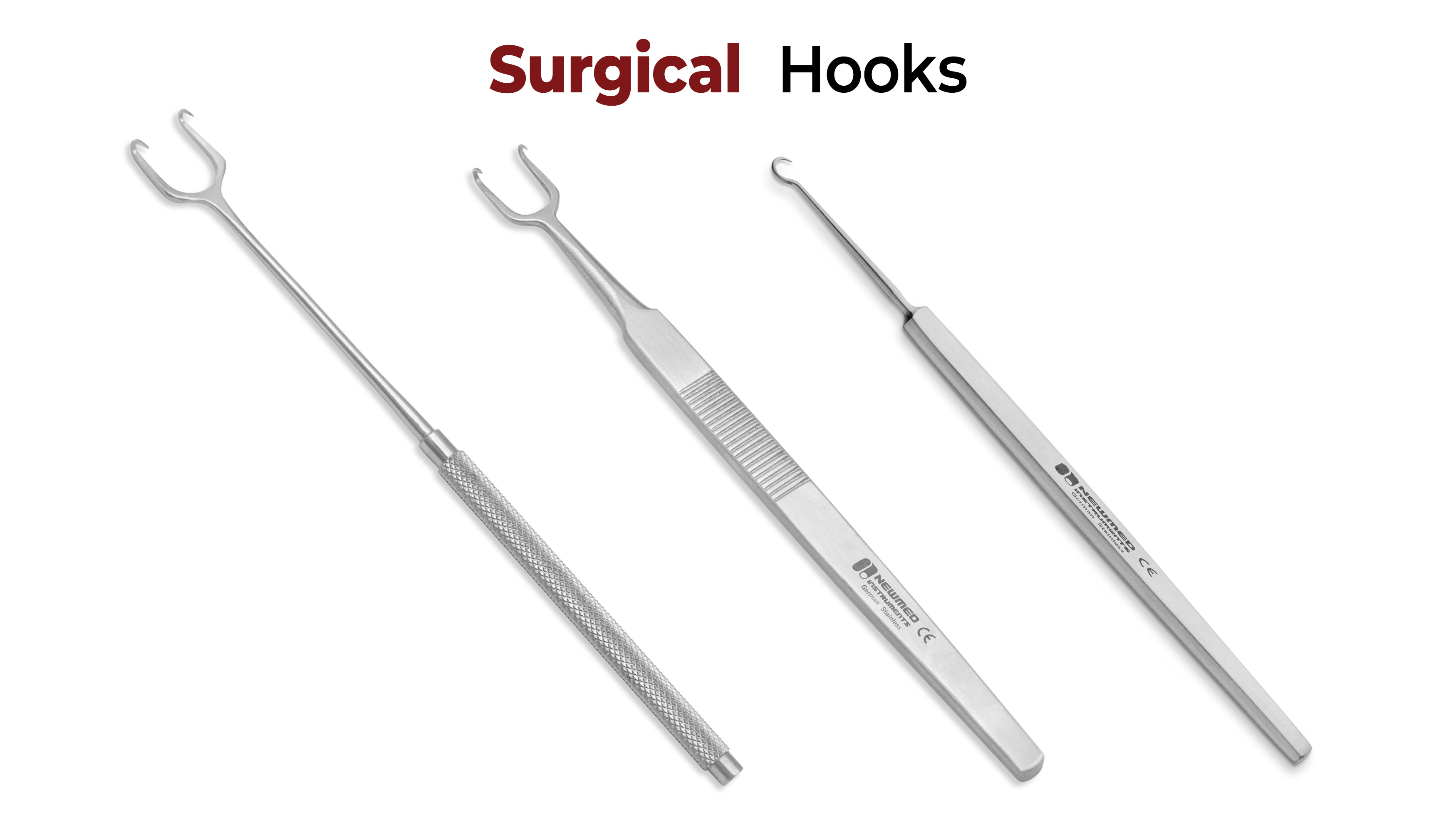
Surgical Drills and Saws
Orthopaedic and neurosurgeries require cutting the skull, bones, and hard tissues. Usually, surgical drills and saws are used for this purpose. Interestingly, drills and saws are made lightweight. Heavy-duty operating room instruments can leave a surgical strain if held for long surgical hours. Therefore, our surgical drills and saws are constructed with an efficient handling mechanism. Additionally, we make sure our surgical equipment has an optimum speed level for precise working.
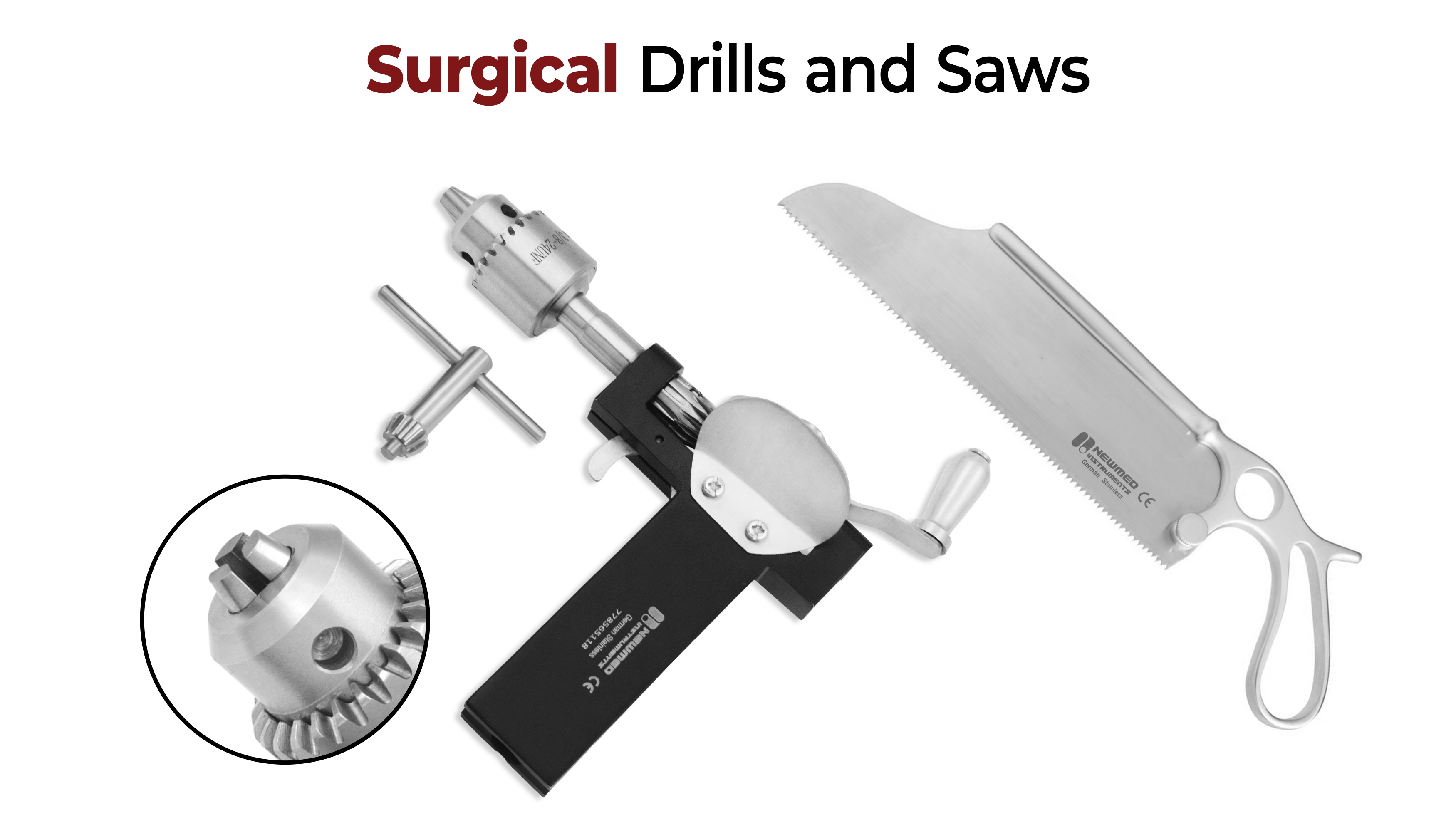
Surgical Rongeurs
Healthcare professionals need to extract bony structures and bones at times. Surgical rongeurs meet those needs. They are great at extracting fragments of bones from the surgical site. Usually, they find application in orthopaedic, dental, neurological, and general surgeries. Especially, during hand surgery, in which they assist in taking out bone fragments for the skin to heal.
Further on, during dissections, surgical rongeurs break open the ribcage to take out the anterior wall of the chest. Generally speaking, they make great tools for gouging purposes. There are two different types of rongeurs, such as the one which we have sharp edges and the one with a scoop-like structure.
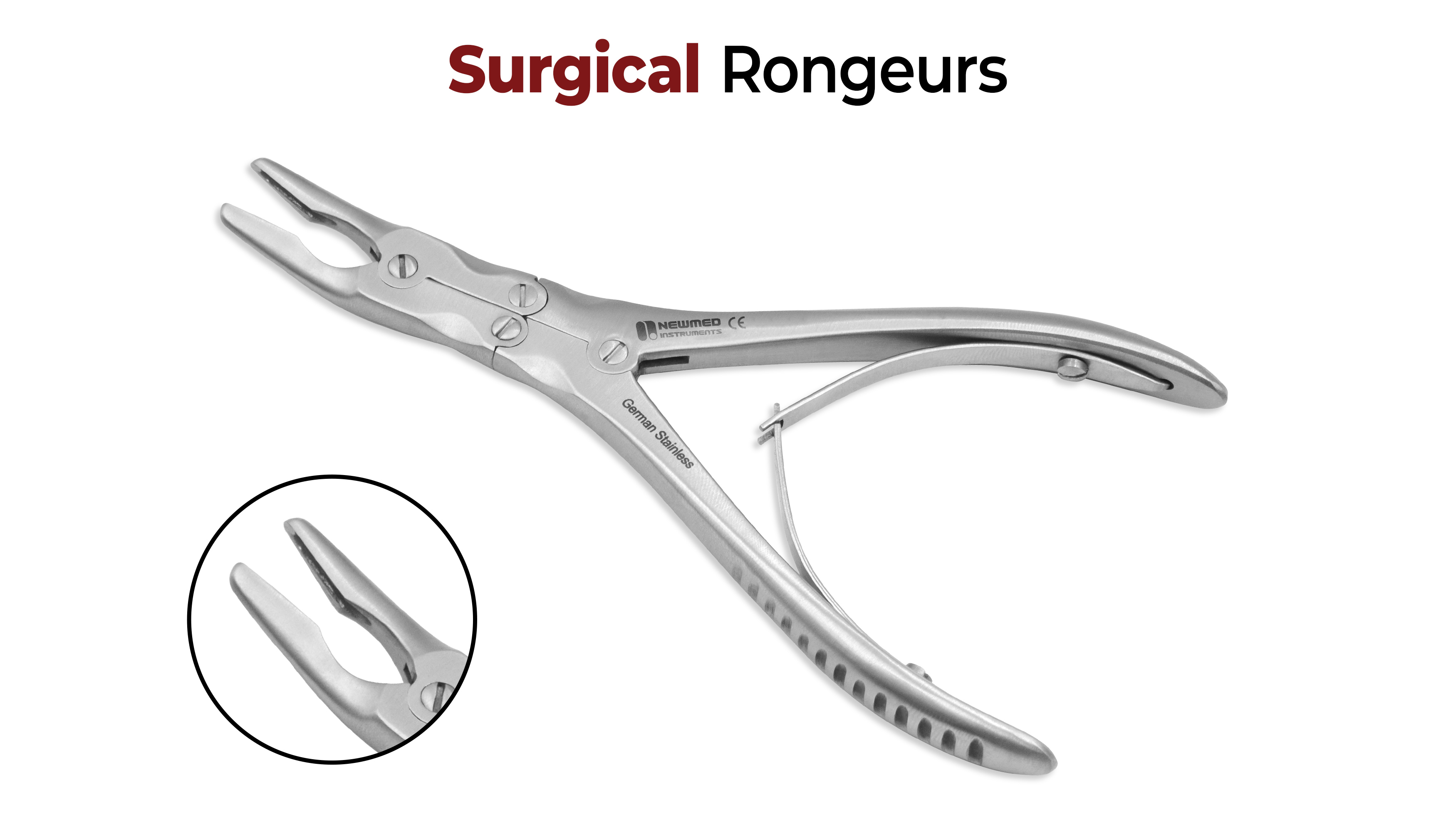
FAQs
Q1: What are the protocols for the maintenance of surgical instruments?
Keeping surgical instruments maintained at all times is necessary for the efficiency of the surgical field. You can keep the basic surgical instruments maintained by regularly sterilising them. It is recommended to clean, sterilise, and then wipe the surgical instruments after use to keep the surgical field germ-free. In case of any confusion, consult our guide on Top 10 Tips for Maintaining Your Surgical Instruments.
Q2: Which tools are used to prevent haemorrhage?
Usually, hemostatic forceps are used to clamp the ends of the blood vessels. This prevents the loss of blood and minimises the chances of haemorrhage.
Revolutionise the Art of Surgery with New Med Instruments
The surgical world is altering with each passing day. Therefore, it is required to follow the modern SOPs for common surgical instruments and surgical instrument sets. NewMed Instruments assists the surgical realm with its detailed guides, such as the top 10 surgical instruments every operating room should have. If you are looking to upgrade your surgical field, getting your instruments from NewMed can prove to be a game-changer. Contact us to book your orders now!

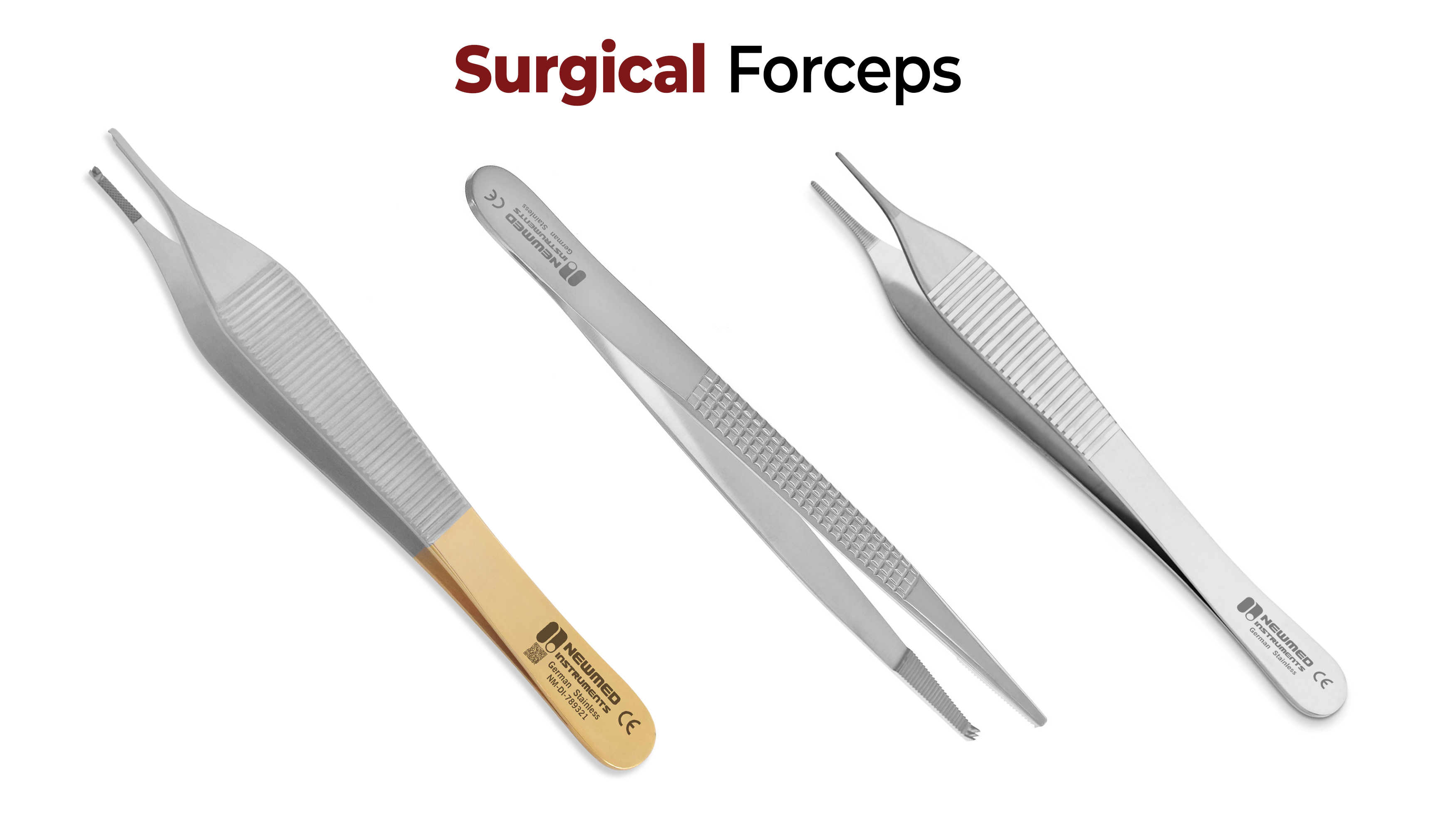
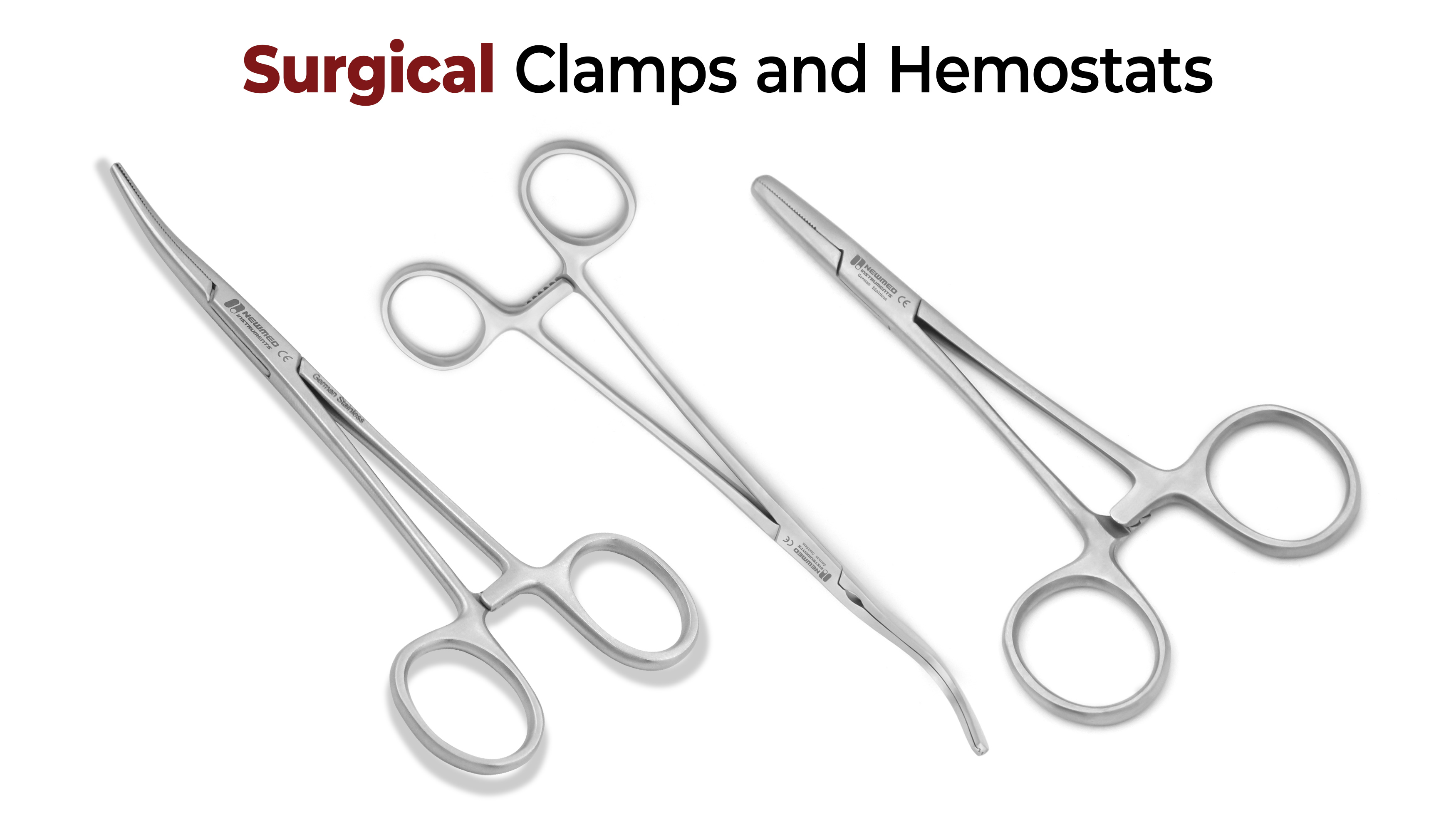
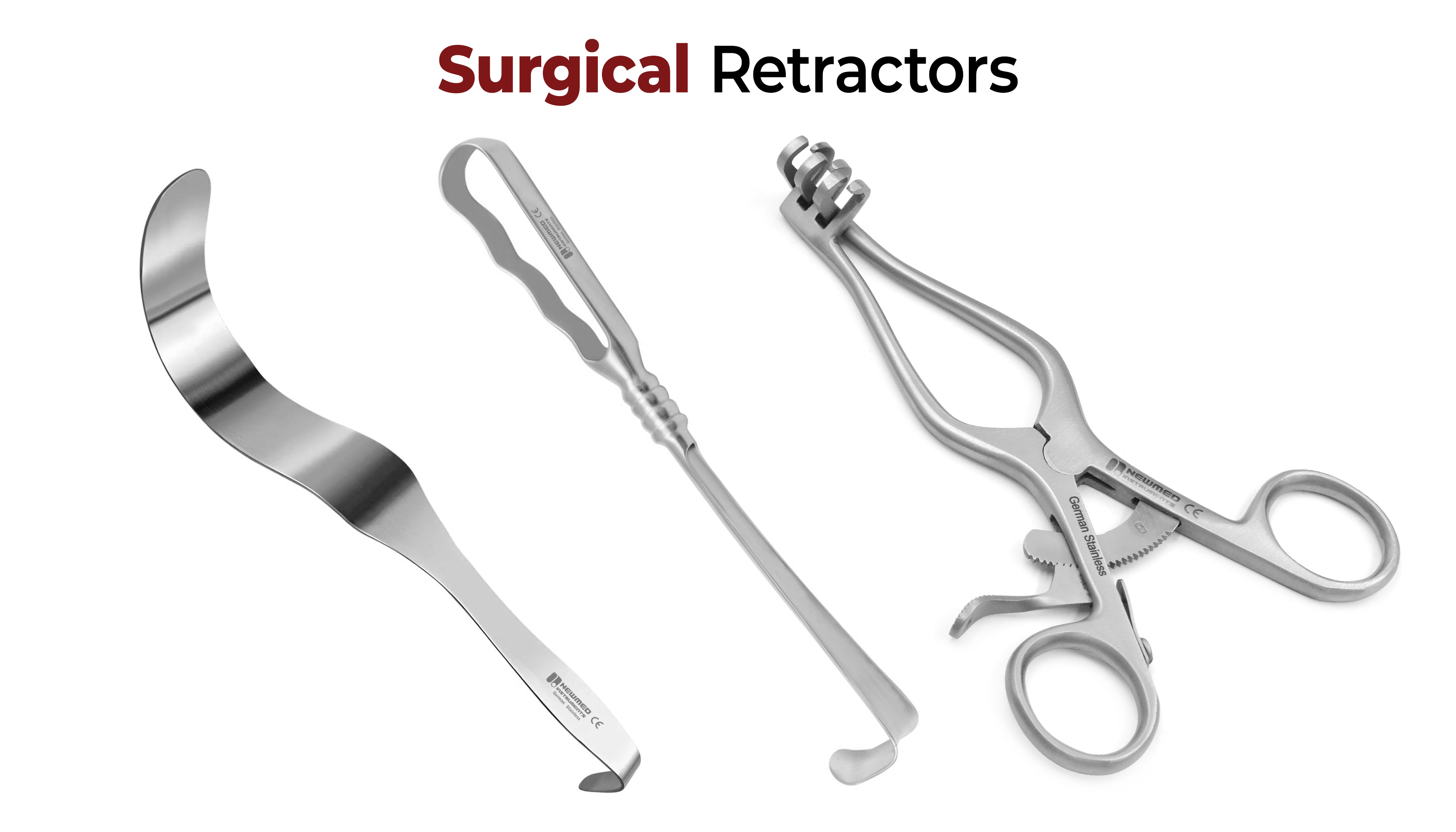

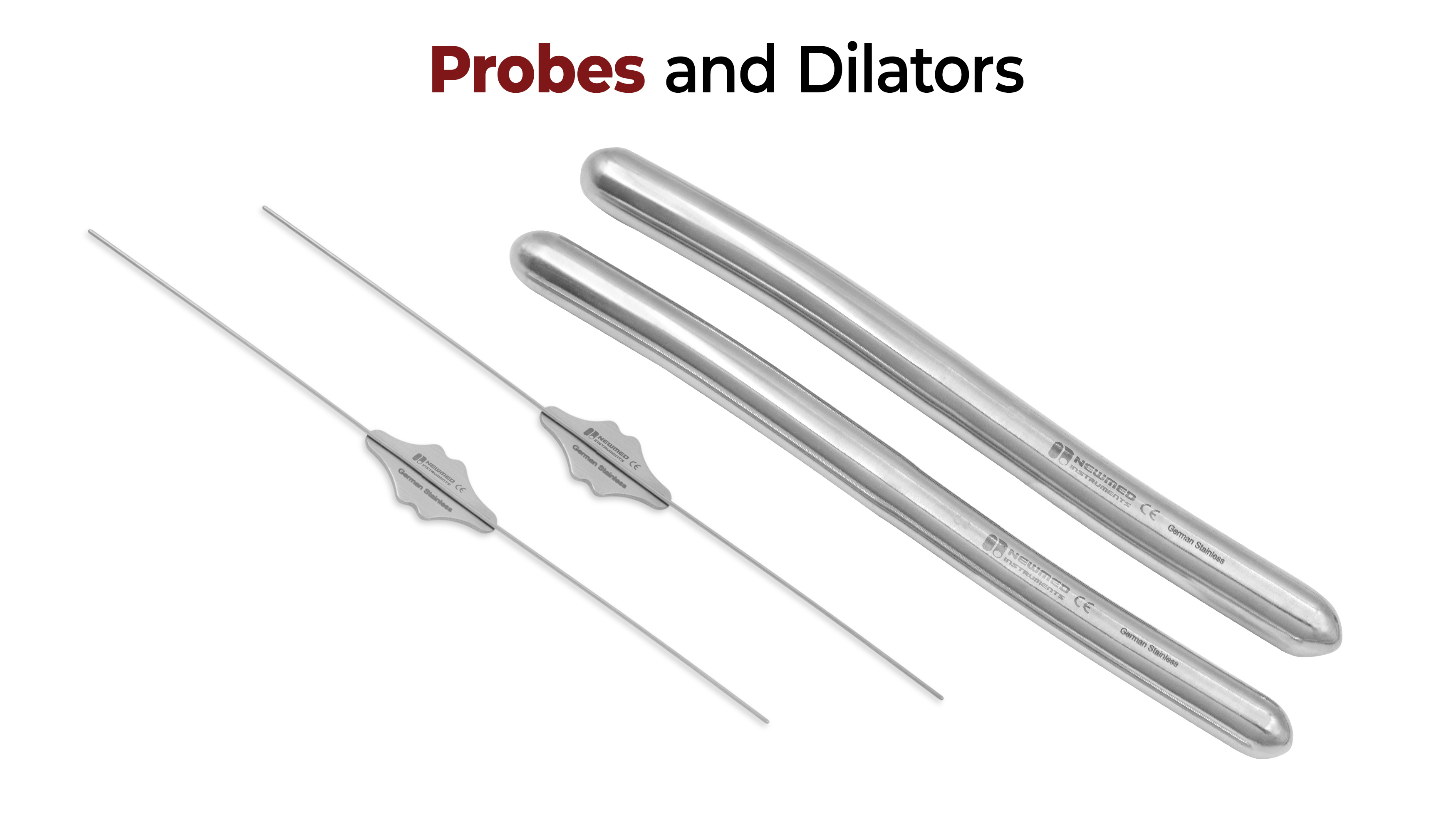
23 Comment(s)
This is a topic that is close to my heart... Take care! Exactly where are your contact details though?
I am sure this post has touched all the internet visitors, its really really nice post on building up new web site.
I really like it when individuals come together and share opinions. Great blog, continue the good work!
I am sure this paragraph has touched all the internet people, its really really fastidious piece of writing on building up new webpage.
I was suggested this web site by my cousin. I'm not sure whether this post is written by him as no one else know such detailed about my difficulty. You are wonderful! Thanks!
Glad to be one of many visitors on this amazing web site :D.
Heya i'm for the first time here. I came across this board and I find It really useful & it helped me out much. I hope to give something back and help others like you aided me.
I conceive you have observed some very interesting points, thanks for the post.
I will right away grasp your rss as I can’t find your email subscription hyperlink or newsletter service. Do you’ve any? Kindly let me recognize so that I could subscribe. Thanks.
I'll right away take hold of your rss as I can't to find your e-mail subscription link or newsletter service. Do you have any? Please permit me know so that I may subscribe. Thanks.
If some one needs to be updated with most recent technologies after that he must be visit this web page and be up to date all the time.
I visited multiple websites but the audio feature for audio songs existing at this web site is really wonderful.
I will immediately grab your rss feed as I can’t find your email subscription link or e-newsletter service. Do you’ve any? Please permit me realize in order that I may subscribe. Thanks.
I love what you guys are up too. This type of clever work and reporting! Keep up the amazing works guys I've incorporated you guys to my own blogroll.
Wow, this piece of writing is good, my sister is analyzing these kinds of things, so I am going to convey her.
Ahaa, its good conversation concerning this post at this place at this blog, I have read all that, so now me also commenting at this place.
Wohh exactly what I was looking for, thanks for putting up.
Ahaa, its good discussion regarding this article here at this blog, I have read all that, so at this time me also commenting at this place.
Ahaa, its good dialogue on the topic of this post here at this web site, I have read all that, so at this time me also commenting at this place.
It's very easy to find out any matter on net as compared to books, as I found this article at this web page.
I'm still learning from you, while I'm improving myself. I absolutely enjoy reading everything that is written on your site.Keep the posts coming. I liked it!
These are actually impressive ideas in on the topic of blogging. You have touched some pleasant factors here. Any way keep up wrinting.
Ahaa, its pleasant dialogue on the topic of this article here at this website, I have read all that, so at this time me also commenting at this place.
Leave a Comment